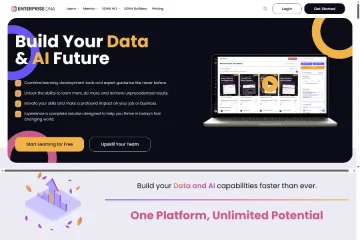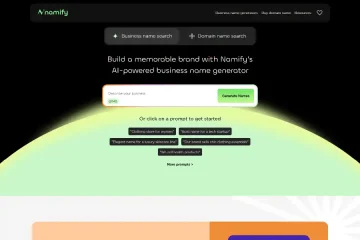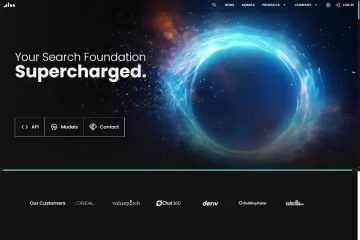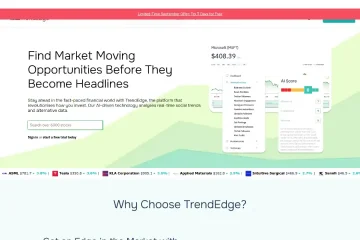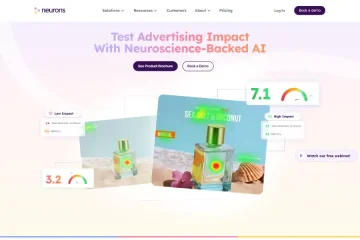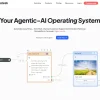
Zapier: The No-Code Operating System for AI-Powered Automation
Introduction: From Siloed Apps to Seamless Workflows
Modern businesses run on dozens—sometimes hundreds—of SaaS applications, yet critical data and tasks remain trapped in isolated silos. Zapier has spent the last decade turning those islands of functionality into a single, orchestrated ecosystem. By adding native AI capabilities, Zapier has evolved from “IFTTT for business” into a full-blown automation engine where large-language-model agents, low-code interfaces, and 6,000+ app integrations converge. The result is an end-to-end platform that lets non-technical teams build sophisticated workflows, deploy AI agents, and launch custom IT systems—all without writing a line of code.
Core Architecture: How Zapier Connects Humans, Apps, and AI
Zapier’s architecture rests on three pillars: Triggers, Actions, and Zaps. A Trigger is any event in a connected app—an inbound email, a new Stripe payment, a Trello card update. An Action is the automated response—create a Jira ticket, update a CRM record, send a Slack DM. A Zap is the conditional logic that binds them, expressed through an intuitive drag-and-drop canvas. Under the hood, every Zap is compiled into a serverless function distributed across AWS Lambda, ensuring millisecond latency and 99.9 % uptime.
AI enters the picture in two ways. First, Zapier’s own LLM micro-services—built on OpenAI GPT-4, Anthropic Claude, and open-source Llama variants—offer native text generation, summarization, sentiment analysis, and classification blocks. Second, the Zapier Tables and Interfaces products allow users to train custom models on their own data without ever leaving the UI. Zapier’s “Transfer” feature even migrates historical data retroactively, so past records can seed new AI logic.
Key Product Offerings
Zaps: The Classic No-Code Workflow Builder
Zaps remain the entry point for most users. Pre-built templates cover 90 % of common use cases—lead routing, invoice creation, customer onboarding—so teams can go live in minutes. For power users, multi-step Zaps support conditional paths, loops, and custom JavaScript or Python code snippets.
Zapier Tables: A Relational Database with AI Columns
Think of Tables as Airtable meets Snowflake, but purpose-built for automation. Each column can be an AI field that auto-generates meeting notes, scores leads, or tags support tickets. Because the schema is relational, users can join customer, transaction, and usage data to trigger hyper-personalized campaigns.
Zapier Interfaces: Build Custom Web Apps in Minutes
Interfaces is a no-code front-end builder that consumes any Zap or Table as its data source. Teams embed forms, Kanban boards, or customer portals directly into their websites, complete with SSO and granular permissions. AI blocks can surface recommended next actions or auto-complete text inputs.
Zapier Agents: Autonomous AI Workers
Announced in late 2024, Agents are goal-oriented bots that can execute entire business processes. An HR agent can screen résumés, schedule interviews, and draft offer letters, while a finance agent reconciles bank statements and flags anomalies. Each agent is governed by a Zapier-defined “guardrail engine” that enforces data privacy, rate limits, and audit trails.
Industry Use Cases
Marketing & Growth
A Series-B SaaS startup uses Zapier to unify lead sources—LinkedIn ads, webinar attendees, and product trials—into a single Table. An AI column scores each lead on fit and intent, triggering personalized nurture sequences in HubSpot. Result: 38 % lift in SQL-to-opportunity conversion within 60 days.
Customer Support at Scale
Intercom chats, Zendesk tickets, and Twitter mentions flow into a Zapier workflow. GPT-4 drafts first responses, sentiment analysis prioritizes urgent issues, and a “swarm” of Agents escalates complex cases to specialized human reps. Average first-response time drops from 2.4 hours to 9 minutes.
Finance & Compliance
A multinational e-commerce brand reconciles 50,000 Stripe transactions nightly. Agents match each payout to Shopify orders, flag anomalies, and generate GAAP-compliant journal entries in NetSuite. Month-end close accelerates from 10 days to 36 hours.
Pricing Tiers
Zapier’s freemium model scales from hobbyists to Fortune 500 enterprises. The free tier allows 100 tasks per month across five single-step Zaps. Paid plans start at $19.99 per month (billed annually) and scale through usage-based tiers. Enterprise customers negotiate custom pricing for SSO, HIPAA compliance, and dedicated support. AI features—such as GPT-4 tokens and custom model training—are metered separately via prepaid credits, ensuring predictable budgeting.
Competitive Landscape
Make.com offers deeper visual scripting but lacks native AI blocks. Microsoft Power Automate is cheaper for Office 365 customers yet suffers from limited third-party integrations. Tray.io targets developers with robust API orchestration but requires technical expertise. Zapier’s sweet spot is breadth of apps, simplicity of UX, and the newly added AI layer—making it the default choice for non-technical operators who still need enterprise-grade reliability.
Security, Governance, and Compliance
SOC 2 Type II, ISO 27001, and GDPR compliance are table stakes. Zapier encrypts data at rest (AES-256) and in transit (TLS 1.2+), supports granular role-based access, and maintains an immutable audit log for every workflow. Enterprise customers can run Zaps inside their own AWS VPC via Zapier’s “Private Deployment” option, ensuring PII never leaves controlled infrastructure.
User Feedback & Community Ecosystem
On G2, Zapier holds a 4.5/5 rating from 1,200+ reviews, praised for reliability and ease of use but dinged for occasional rate limits on AI tokens. The Zapier Community boasts 150,000+ members sharing templates, hosting webinars, and voting on feature roadmaps. A certified Experts marketplace pairs agencies and freelancers with organizations seeking custom implementations, creating a virtuous cycle of innovation and support.
Future Roadmap: Toward a Fully Autonomous Business OS
Zapier’s product vision is moving from “workflow automation” to “autonomous business orchestration.” Upcoming releases include multi-agent collaboration (agents negotiating hand-offs), deeper vertical templates for healthcare and legal, and a natural-language interface where users describe goals in plain English and Zapier generates the entire stack—database schema, front-end, and AI logic—automatically.
Conclusion: Democratizing AI for Every Knowledge Worker
In an era where AI is often locked behind data-science teams or expensive consultancies, Zapier stands out as the great equalizer. By merging 6,000 integrations with state-of-the-art language models under a no-code umbrella, Zapier enables marketers, HR managers, and finance analysts to deploy AI agents that once required entire engineering squads. Whether you are routing leads, reconciling payments, or launching a customer portal, Zapier lets you build, iterate, and scale at the speed of thought—no code, no limits, no waiting.

